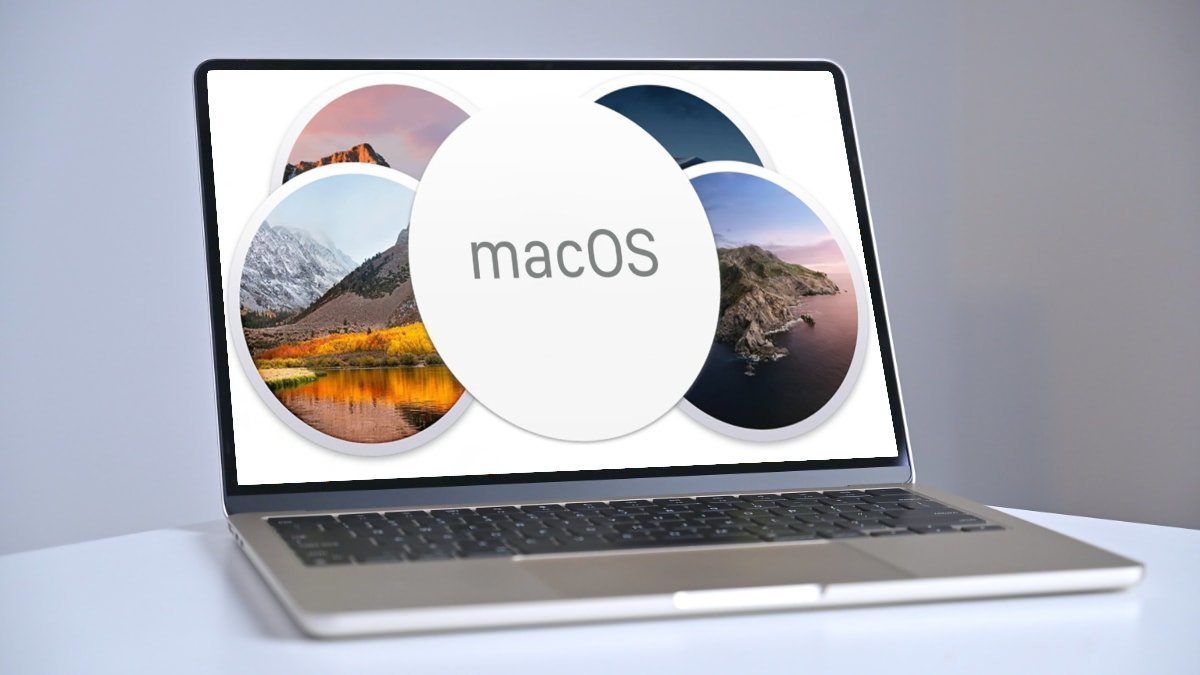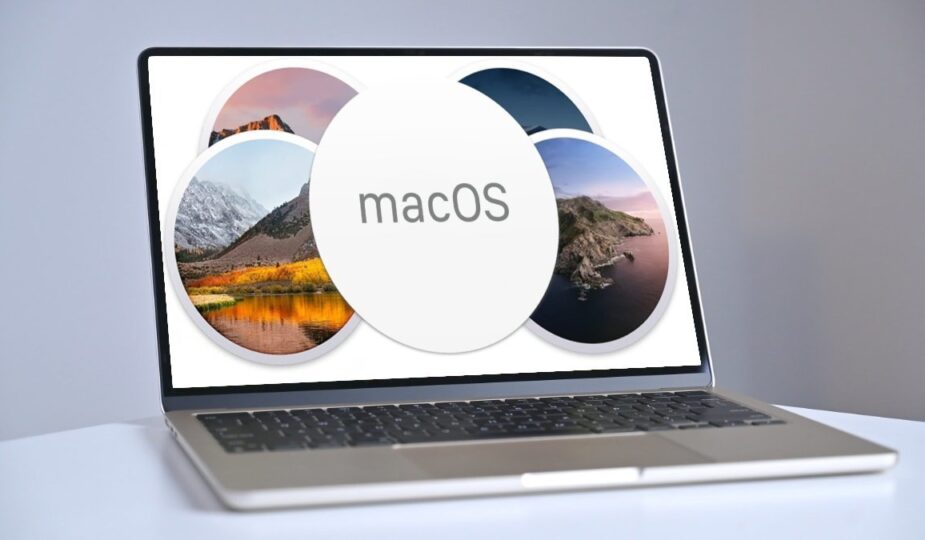You can roll back your macOS installation.
 0 Facebook x.com Reddit
0 Facebook x.com Reddit
There are several reasons why you might want to downgrade to an older version of macOS than the version currently installed on your Mac. Here's how to do it.
Apple updates macOS, the operating system for Mac computers, once a year. Each subsequent year, a new version of macOS is released with improvements, new features, and compatibility updates.
For a variety of reasons, you may need to downgrade to an older version of macOS. You may need an older version of macOS for compatibility reasons, such as opening older files. If you are a developer, you might test your software on an older version.
From time to time, Apple discontinues support for older versions of macOS and Mac hardware. Older versions are no longer supported by Apple, and online updates for base versions of macOS may not be available.
Apple hosts several standalone versions of installers for macOS on its support website, and you can use them to reinstall macOS — if your hardware supports these versions.
How to return macOS to a previous version — getting started
Before you continue, you should back up all your data on your Mac, especially its internal drive, since you're going to erase it and reinstall everything. When you do this, everything on your internal drive will disappear.
After the backup, make a note of a few important places on your startup disk that contain the files you want to return:
- Applications
li>
- Library
- Administrator folder (~)
- Settings
- Application support
- Fonts
- Hidden configuration files
Also, make a note of the “Downloads” and “Documents” folders inside your user folder. Before reinstalling, you will also need to make a backup copy of all files located there.
The user folder also contains “Music” and “Movies” folders. If you use Apple Music, your music collection is saved in the Music folder by default, so back it up if necessary.
The file structures inside the /Library and ~/Library folders are similar, but the ~/Library folder has more items to pay attention to.
There is also a Logs folder in /Library, so if you want to keep the current logs from your Mac, back them up.
In both library folders, you can determine what has changed by sorting the folders by date.
If you use Apple Photos, by default its library is located in the ~/Library/Photos/Syndiction.photoslibrary folder.
The Settings folder in both locations stores most of your app's settings, so be sure to back them up.
How to return macOS to a previous version — Don't forget about contacts
One important feature that most users overlook when backing up is the Apple Contacts app. If you are using locally saved contacts, be sure to export your address book to a backup drive, otherwise all your contacts will be lost.
This can be done in the Contacts application using the menu item File->Export->Contacts Archive….
This isn't such a problem if you've set up iCloud for Contacts, since your contacts will be stored online for later use.
Once you've made a backup, you can move on to the next step: wiping your internal boot drive.
Keep in mind that reformatting your internal startup drive will also erase everything on your Mac's desktop.
How to return macOS to a previous version — Reboot into Recovery Mode
Apple Recovery Mode is a special application built into your Mac's firmware. When you boot into Recovery Mode, the Mac loads this app instead of loading macOS.
Recovery mode has only the bare minimum of apps needed to reformat, test, and reinstall macOS, most notably Disk Utility, Time Machine Recovery, and the macOS installer app.
When you update your Mac's firmware to the latest version from Apple, it is also updated to the latest supported version of the macOS installer, so you may want to check Apple's support website first to see if there are any new firmwares available. updates for your Mac model.
If you want to downgrade to a previous version of macOS, see the note below about downgrading firmware instead of upgrading.
When updating your Mac's firmware, you typically need to download a firmware update application, launch it from Finder, flash the firmware on your Mac, and then restart.
Once your firmware is updated, you are ready to enter recovery mode.
To enter recovery mode on an Apple Silicon-based Mac, turn off your Mac, then press and hold the Power button until the Options menu appears. When this happens, pressSettingsicon. This boots into recovery mode.
Boot into recovery mode.
On an Intel-based Mac, restart your computer and hold Command-R on your Mac. keyboard. This also boots into recovery mode.
If your goal is to go back to a previous version of macOS, don't update your Mac's firmware just yet. Instead, follow the instructions below, reinstall the current version of macOS that's in your Mac's firmware, and then update the firmware later.
This allows you to use the latest version of macOS included with your Mac's firmware, or, if you've never updated your firmware, the version of macOS that came with your Mac.
How to return macOS to a previous version — Launch Disk Utility
After rebooting into Recovery Mode on Macs with Apple Silicon, click the Disk Utility icon to open it. On Intel-based Mac computers, Disk Utility is typically located in the menu bar at the top of the display.
In Disk Utility, you need to select the internal drive from the list of drives on the left, then click the Erase icon in the toolbar at the top of the window. .
When you click Erase, you will be asked to choose a name and format for the new volume (partition). Enter a name and select APFS as the volume format.
macOS Disk Utility.
Make sure this is what you need, because as soon as you click the Erase, everything on your Mac's internal drive will be gone forever.
Disk Utility will erase your Mac's internal drive and add a new APFS volume to it with the name you specify. Now you have a clean Mac with nothing on it.
How to return macOS to a previous version — Run the macOS Installer
Once your Mac is erased, Close Disk Utility and you'll be returned to the main firmware menu. From here, you can select the macOS installer that's in the firmware and reinstall macOS on the one you just created on your internal drive.
This may take a while, and if you have a later model Mac and are connected to the Internet, the macOS installer may also download and install the updates.
Be patient. Once the macOS installer completes, you'll be prompted to restart your Mac. On later Mac computers, the restart may occur automatically.
Either way, when your Mac restarts, it will launch the newly installed version of macOS. Navigate through the macOS setup screens to get to the Finder.
How to return macOS to a previous version — Restoring important files
Back in the Finder, you need to copy all the important files from your latest macOS installation from the backup to your new macOS installation.
This involves first displaying invisible files in the Finder, and then copying important files back from the backup to the startup drive.
If you've made a full disk backup of your Mac, you can try using Apple Migration Assistant, located in the /Applications/Utilities folder, instead.
Migration Assistant attempts to automatically restore user and settings files from backup to the new installation.
If you don't use Migration Assistant, you will have to copy all important files back from your backup. Most of these are the files and folders mentioned above, usually contained within two library folders.
Remember to copy all important invisible files from the original user folder to the new user folder. Not all system backup files need to be copied back—only those that are important to your specific settings and files.
After restoring files from a backup, you will need to restart your Mac again to allow the system to reload the restored settings.
Finally, launch the System Preferences application in the /Applications folder and run General->Software Update again to get the final updates.
Please note that if you've downgraded to an earlier version of macOS, you won't want to run the update because it will try to update to the latest full version of macOS that your Mac supports.
In this case, you can usually manually download macOS updaters for the older version of macOS and run them from Finder to update your version of macOS to the latest supported minor version for the version you've reverted to.
A few words about macOS versions and firmware
One thing to note about macOS installers is that Apple's latest installers don't allow you to install an older version of macOS on top of a newer one. On some Macs, you also won't be able to restore an older version to a volume containing a newer version of macOS from recovery mode.
It is for this reason that it is best to erase your Mac's internal drive before attempting to restore any version of macOS. Also note that in the firmware update process described above, once your Mac's firmware is updated, it is generally not possible to downgrade it to an earlier version later.
So before updating your firmware, be sure to consider which version of macOS is stored in the firmware you want to use.
Downloadable installers
Another option is to download an older version of the macOS installer from the Mac App Store.
Apple maintains several older versions of the macOS installer in the App Store. Keep in mind that if you use this method, older installers will not allow you to reinstall that version of macOS over an existing newer macOS installation.
You can find older installers in the Mac App Store by searching for “macOS installer,” but the App Store may only show the two most recent versions. For earlier versions, you'll have to find specific installer links online and then navigate to them in the App Store.
Search for macOS installers in the App Store.
The reason you may be using an older installer download is because your Mac's firmware is already may be updated. outside the version of macOS you want to restore, or for some reason you don't have the option to use recovery mode.
In these cases, you will need to use a second drive, install the old version of macOS on it, boot from it, then wipe your Mac's internal drive from there and reinstall when booting from the external drive. .
You can't erase the boot drive you booted to from macOS. This means that to reinstall, you'll always need another way to boot your Mac, either from a different drive or from recovery mode.
You may want to keep copies of any old macOS installer downloads for future use if you need to revert to an older version.
Your Mac can also be restored using the Apple Configuration utility, which we will talk about in the next article.









